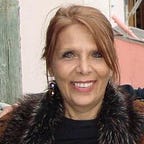The Post-Modern ‘Self’
Technology and tokenization: the representation (explanation) and ‘realization’ of ‘self.’
Technology and the Notion of ‘Self’
Technology and tokenization: the representation (explanation) and ‘realization’ of ‘self’ comes from the circular-linear relationship between one ‘self’ and, at-most, and, at-least, one-other-self (one zero, one one) (all zeroes, one, one) (the tokenization of zero and one).
More conventionally:
The [Notion of] Self after Postmodernity by Calvin O. Schrag
Sketching a new portrait of the human self in this thought-provoking book, leading American philosopher Calvin O. Schrag challenges bleak deconstructionist and postmodernist views of the self as something ceaselessly changing, without origin or purpose. Discussing the self in new vocabulary, he depicts an action-oriented self defined by the ways in which it communicates.
The self, says Schrag, is open to understanding through its discourse, its actions, its being with other selves, and its experience of transcendence.
In his discussion, Schrag responds critically to both modernists and postmodernists, avoiding what he calls the modernists’ overdetermination of unity and identity and the postmodernists’ self-enervating pluralism. He agrees with postmodernist attacks on both the classical theory of the self as a metaphysical substance and the modern epistemological construal of the self as transparent mind, yet he maintains that jettisoning the self as understood in these terms does not mean jettisoning it altogether.
The self as subject is not dead, nor are the constitutive features of self-formation and self-understanding. In addressing the role of culture in the dynamics of self-formation, the author offers a critique of Max Weber’s and Jürgen Habermas’s view of modernity as a radical differentiation of three cultural spheres: science, morality, and art; he adds religion as a legitimate fourth cultural sphere. The overview of Schrag’s philosophy that The Self after Postmodernity provides will appeal to readers with an interest in literary criticism and religion as well as philosophy.
Calvin O. Schrag is George Ade Distinguished Professor of Philosophy at Purdue University. His previous books include Existence and Freedom, Experience and Being, Radical Reflection and the Origin of the Human Sciences, Communicative Praxis and the Space of Subjectivity, The Resources of Rationality, and Philosophical Papers. ISBN: 9780300068429
Publication Date: March 27, 1997 176 pages, 5 1/2 x 8 1/4
Circular Theory Notion of ‘Self’
Tokenized text (string of tokens) above in circular theory representation below (representation as tokenization, and, always, vice versa) (any number of ‘circles’) (read: selves) (two circles) (read: selves) (not one) (read: self):
Conservation of the Circle is the only dynamic in Nature. (No matter what’s going on around you, the diagram shows how it (always) looks to Nature.) (The diagram is the ‘constant.’ Everything else: variables.)
Continue with: The Diagram and the Statement. Foucault, Deleuze, and the… | by Ilexa Yardley | The Circular Theory | May, 2021 | Medium
